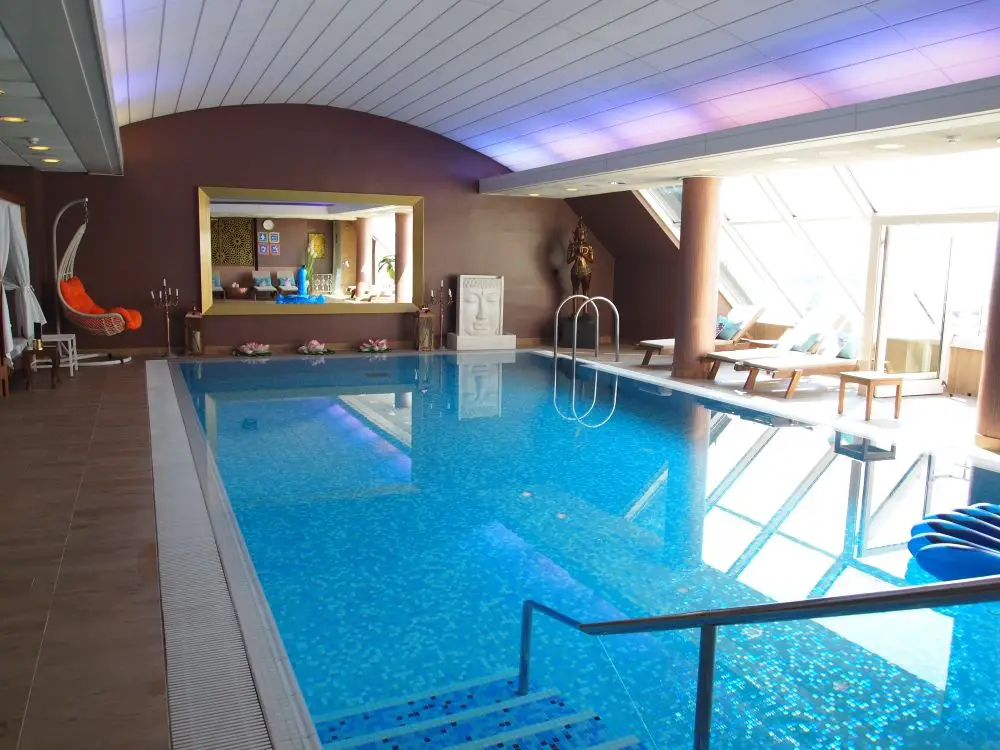Made in Slovenia
STA, 2 January 2019 - The Slovenian National Theatre (SNG) Maribor (Slovensko narodno gledališče Maribor) will mark its centenary in 2019, with celebrations culminating on 27 September, exactly 100 years after its founder Hinko Nučič staged the first play there.
Maribor had a vibrant cultural scene even before the professional theatre was formally established in what is now Slovenia's second largest city.
But the new theatre enhanced Slovenian national identity and positioned Slovenian as the national and official language.
The building housing SNG Maribor was built in 1852, and since then Maribor has had a professional theatre, but at the time it was fully German.
"Slovenian actors were not allowed to perform there," director and author Vili Ravnjak, who has worked for SNG Maribor for many years, has told the STA.
While first productions in Slovenian were staged as early as the middle of the 19th century, they were performed at a different location.
"It was only when Maribor became a politically and culturally Slovenian city that acting naturally moved to the former German theatre", which closed shop after WWI in early 1919.
In 1941, when Slovenian lands were occupied by the Nazis, German theatre was reintroduced, while Slovenian professional theatre was revived after WWII in 1945.
Although it is hard to say when SNG Maribor had its heyday, Ravnjak highlighted the 1930s and 1990s for drama and the last decade for opera and ballet.
Plays at SNG Maribor attracted the most media attention when director Tomaž Pandur (1963-2016) put on stage his controversial extravaganzas in the 1980s and 1990s.
Ballet and opera ensembles have meanwhile made a name for themselves under artistic directors Edward Clug, a choreographer of world renown, and conductor Simon Krečič.
SNG Maribor is the largest public cultural organisation in Slovenia and the only one bringing under one roof drama, opera and ballet.
It formally consists of Drama, Opera, Ballet and the Symphony Orchestra, while also housing the Maribor Theatre Festival as a separate unit.
In 2003, it was granted the highest status - that of national theatre, which means it is fully funded by the state or the Culture Ministry as its founder.
Danilo Rošker, SNG Maribor's director for the past 15 years, believes that ever since its beginnings, the theatre has enriched the cultural scene and extended the boundaries of what is possible.
The celebrations will be launched in January when SNG Maribor's production is presented at Ljubljana's Cankarjev Dom, accompanied by talks with acclaimed artists.
But it will be particularly festive in September: an exhibition tracing the theatre's history will be put up in the streets of Maribor, a monograph and a special postal stamp will be published and a special ceremony staged.
September 27 will see the premiere of Grmače, a play by acclaimed Slovenian author Dane Zajc (1929-2005) staged by Nina Rajić Kranjac, a rising star on the Slovenian theatre scene.
The celebrations will end with an opera premiere in May 2020 to remember 1 May 1920, when SNG Maribor's predecessor staged the first opera, Hervé's Mam'zelle Nitouche.
The theatre’s English website can be found here
Drago Tršar (b. 1927) was the subject of two major exhibitions in 2018. One focused on his monuments, and was put on in the Modern Gallery’s (Moderna galerija) main branch, by the National Gallery. That one ended in September, although you can still see certain works around town, as you’ll recognise in this story.
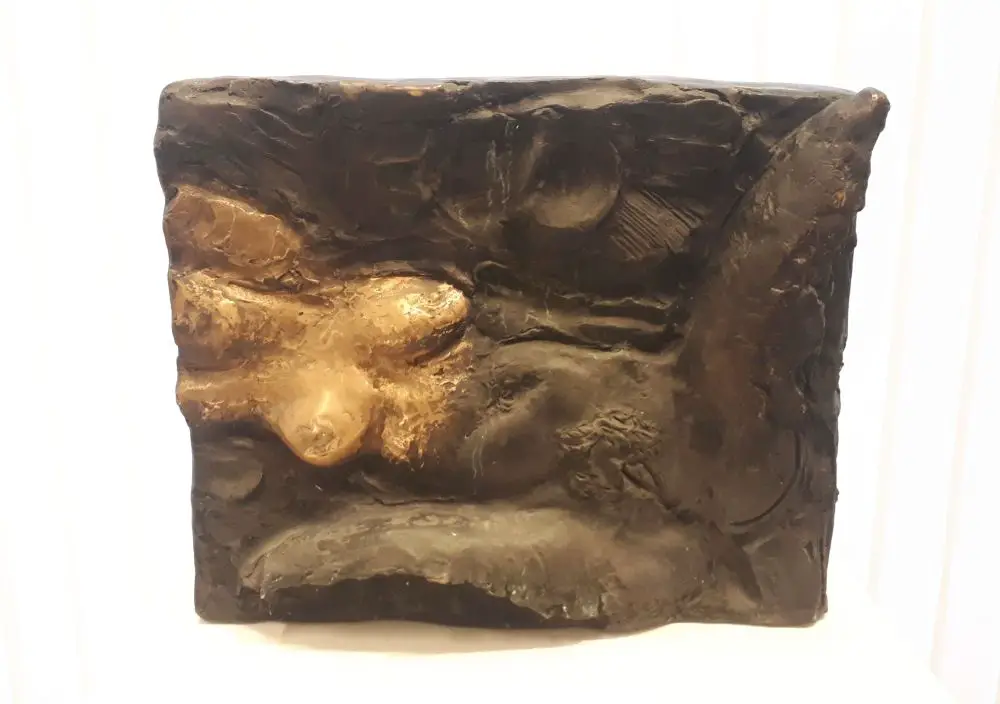
Photo: JL Flanner
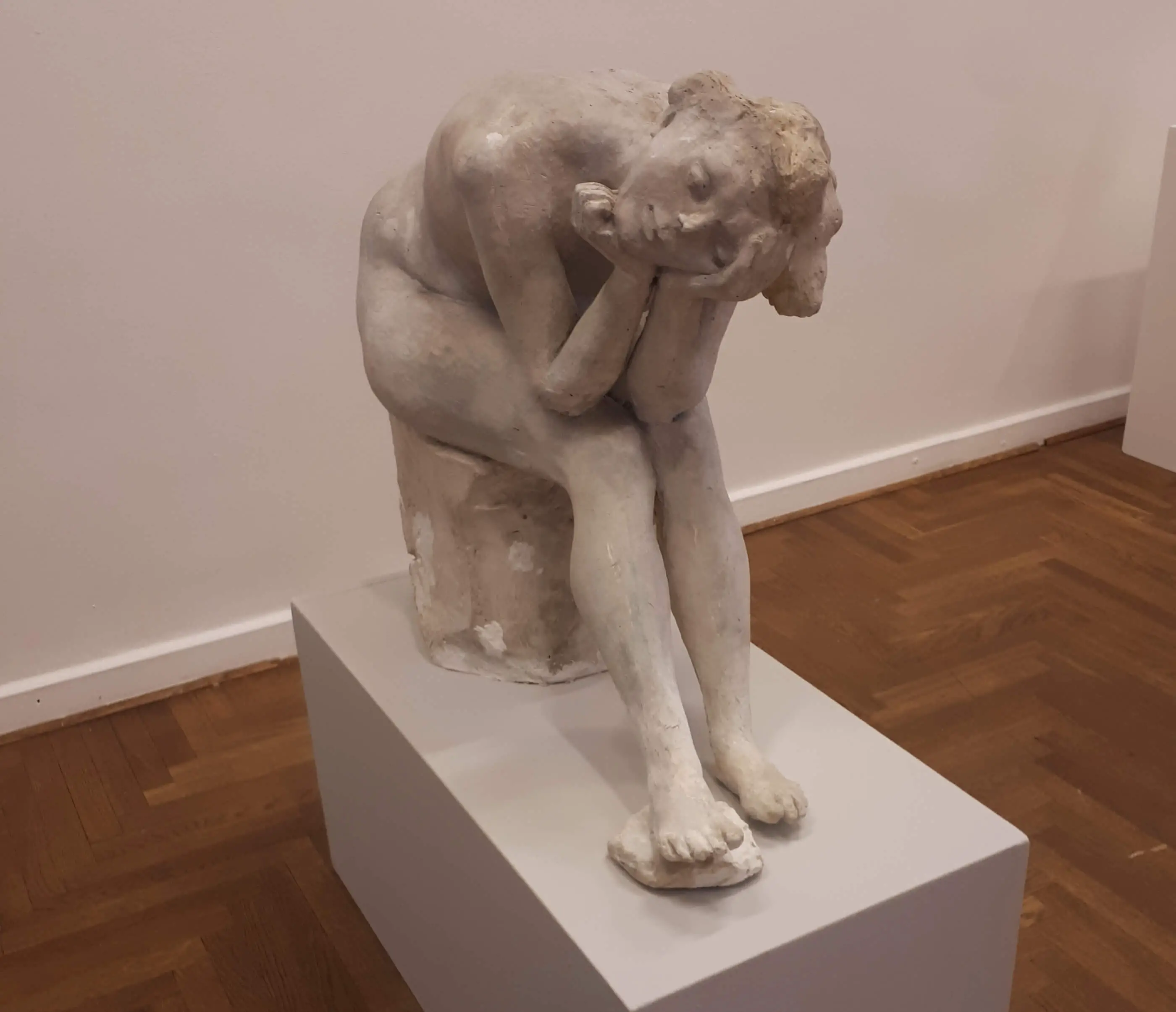
Photo: JL Flanner
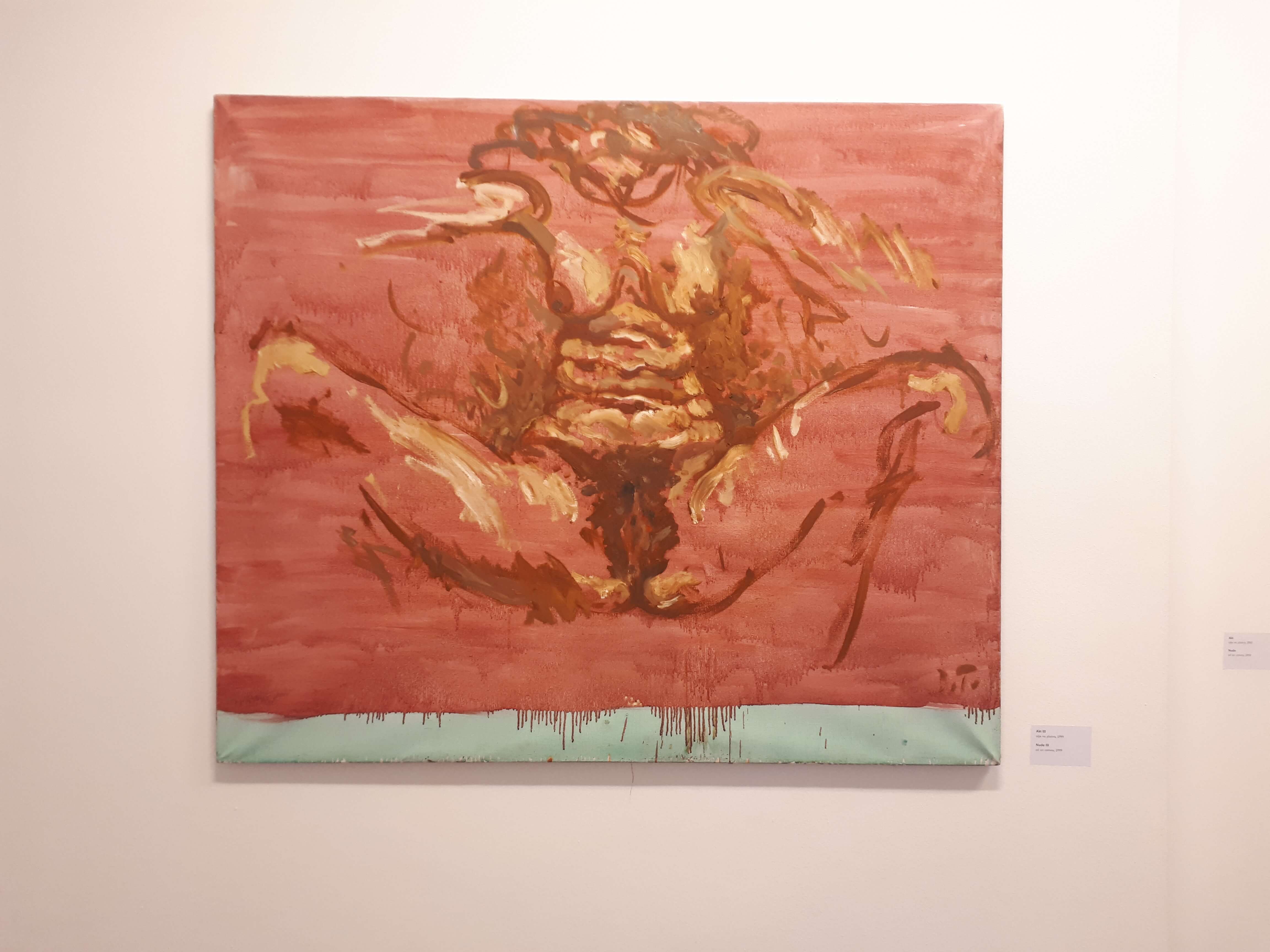
Photo: JL Flanner
The second exhibition opened in late November and continues until January 20, 2019. This was curated by Sarival Sosič, PhD, and is on at the City Gallery (Mestna galerija), just a few doors down from City Hall, and shows a very different side to the man, being two floors of erotic sculptures and paintings rather than heroes of the post-war Yugoslav state.
Related: Republic Square – Ljubljana’s own concrete utopia
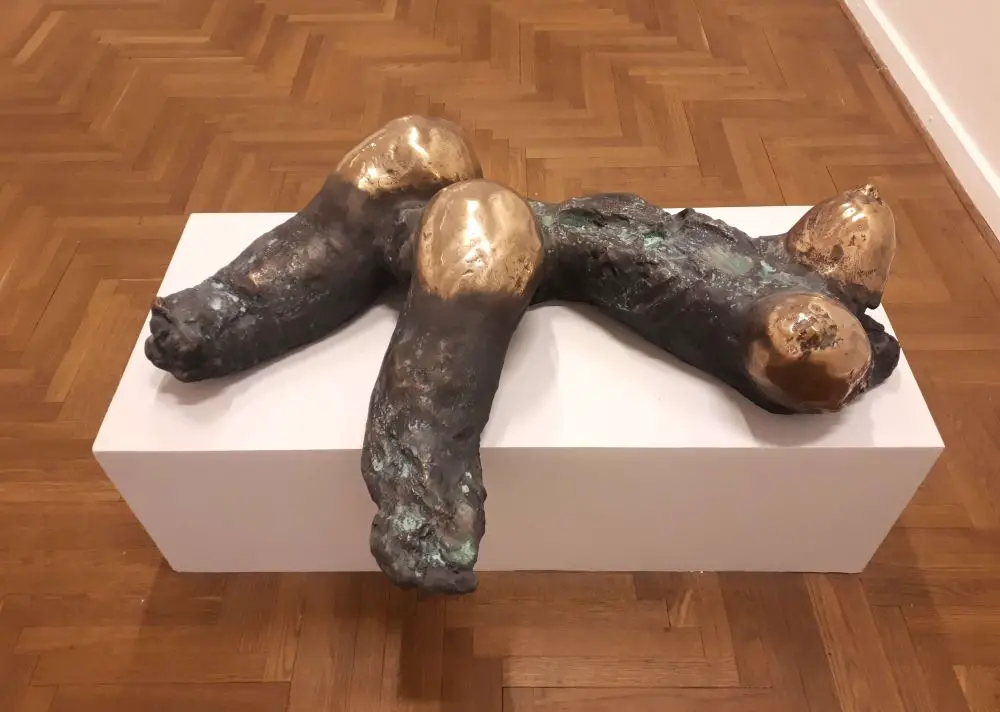
Photo: JL Flanner
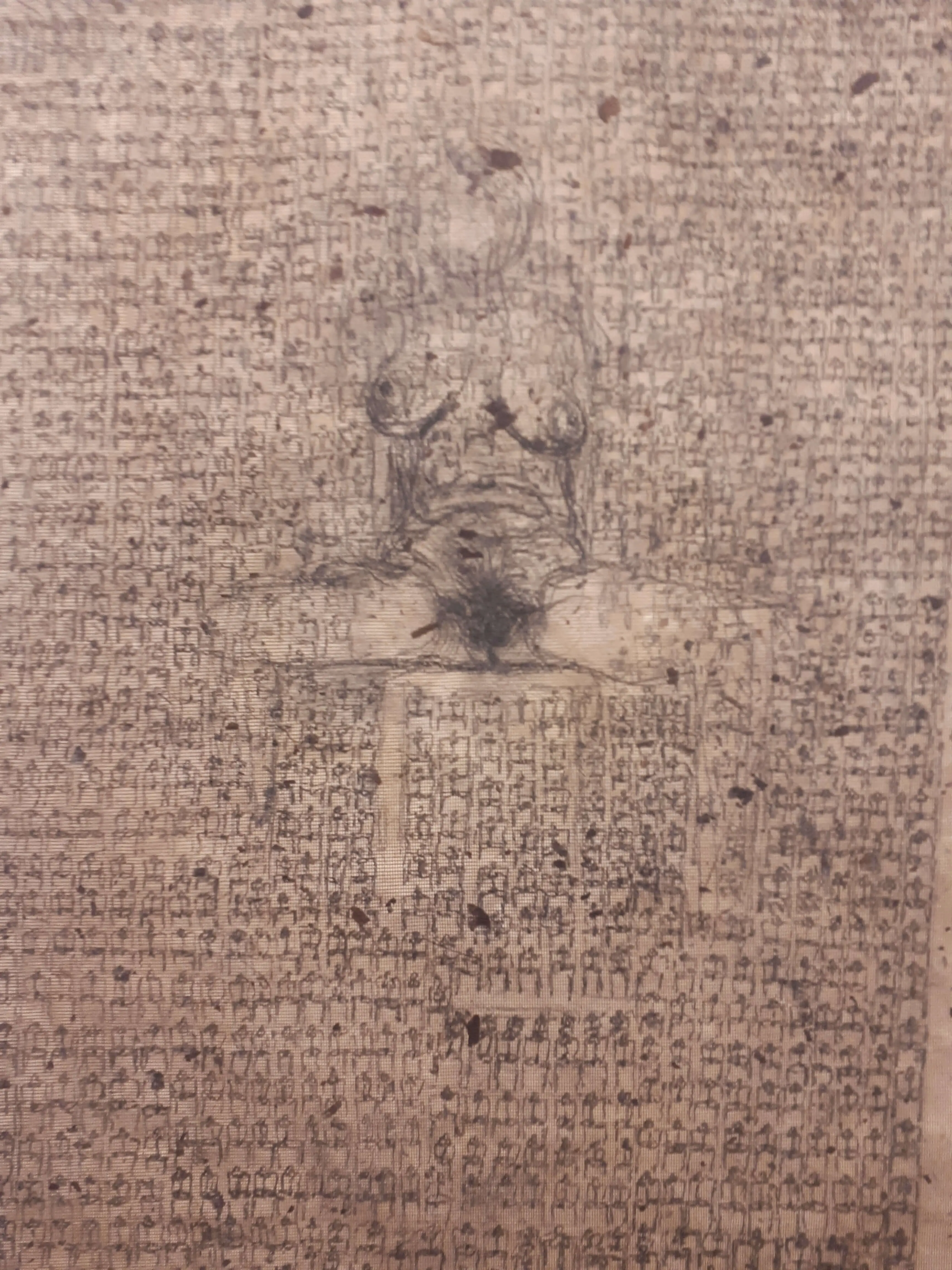
Photo: JL Flanner
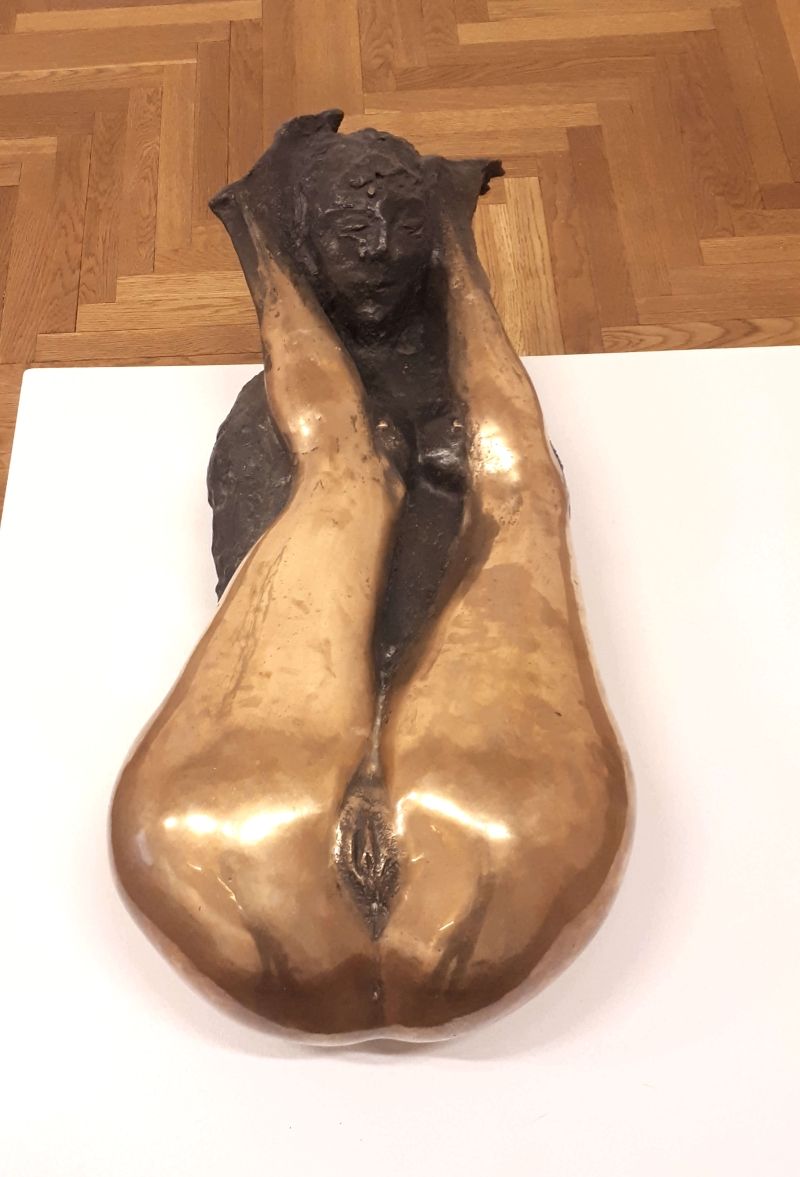
Photo: JL Flanner
As should be clear in the images accompanying this text, these are erotic works in bronze and ceramic, as well as a few paintings, large and small, and not studies of the naked form at modest rest. There’s no is she or isn’t she – as with Bernini's The Ecstasy of St Theresa – but instead many of the subjects are clearly lost in orgasm, so bear this in mind if in town with the neighbour’s kids or the Pope.
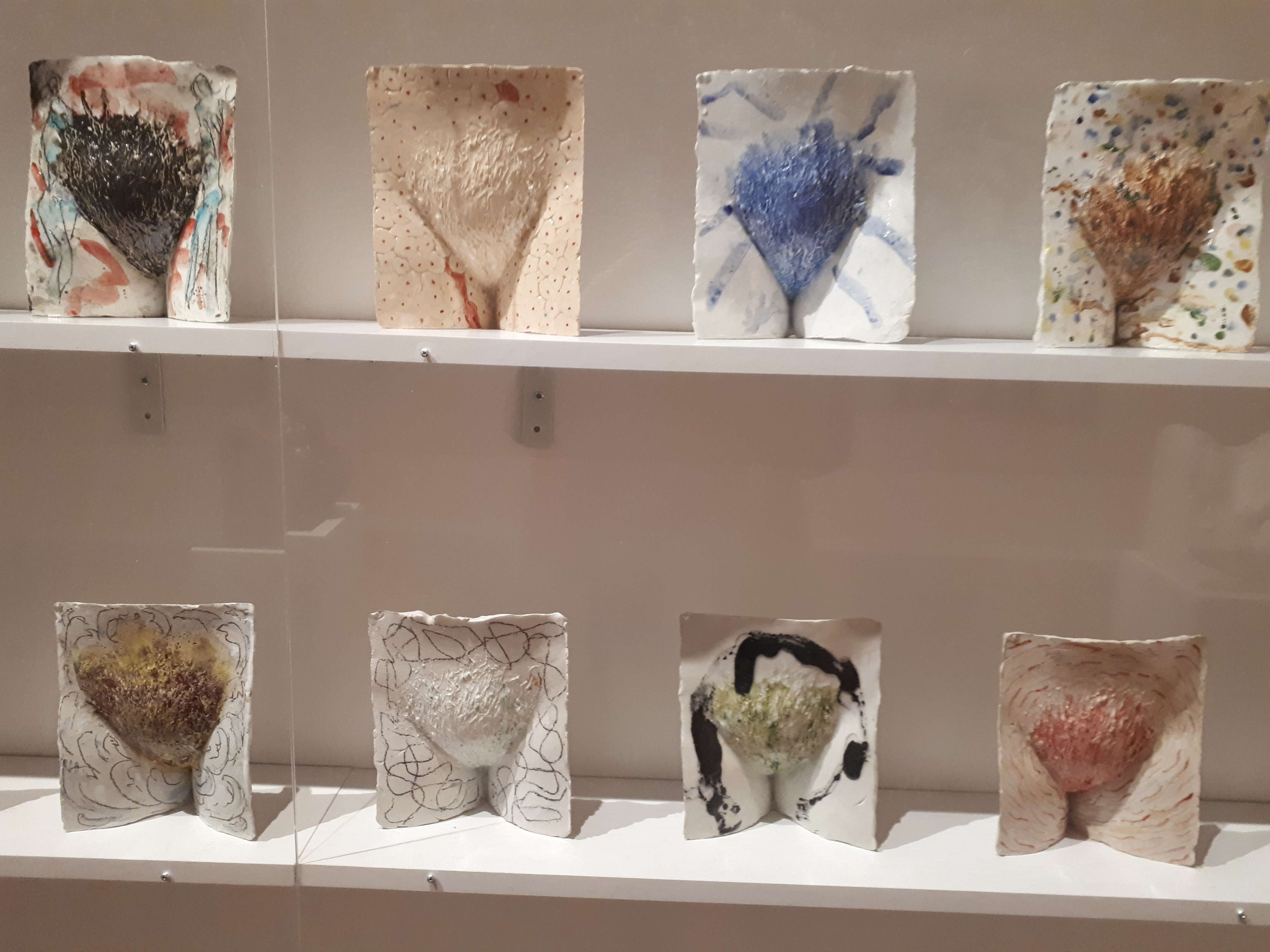
Photo: JL Flanner
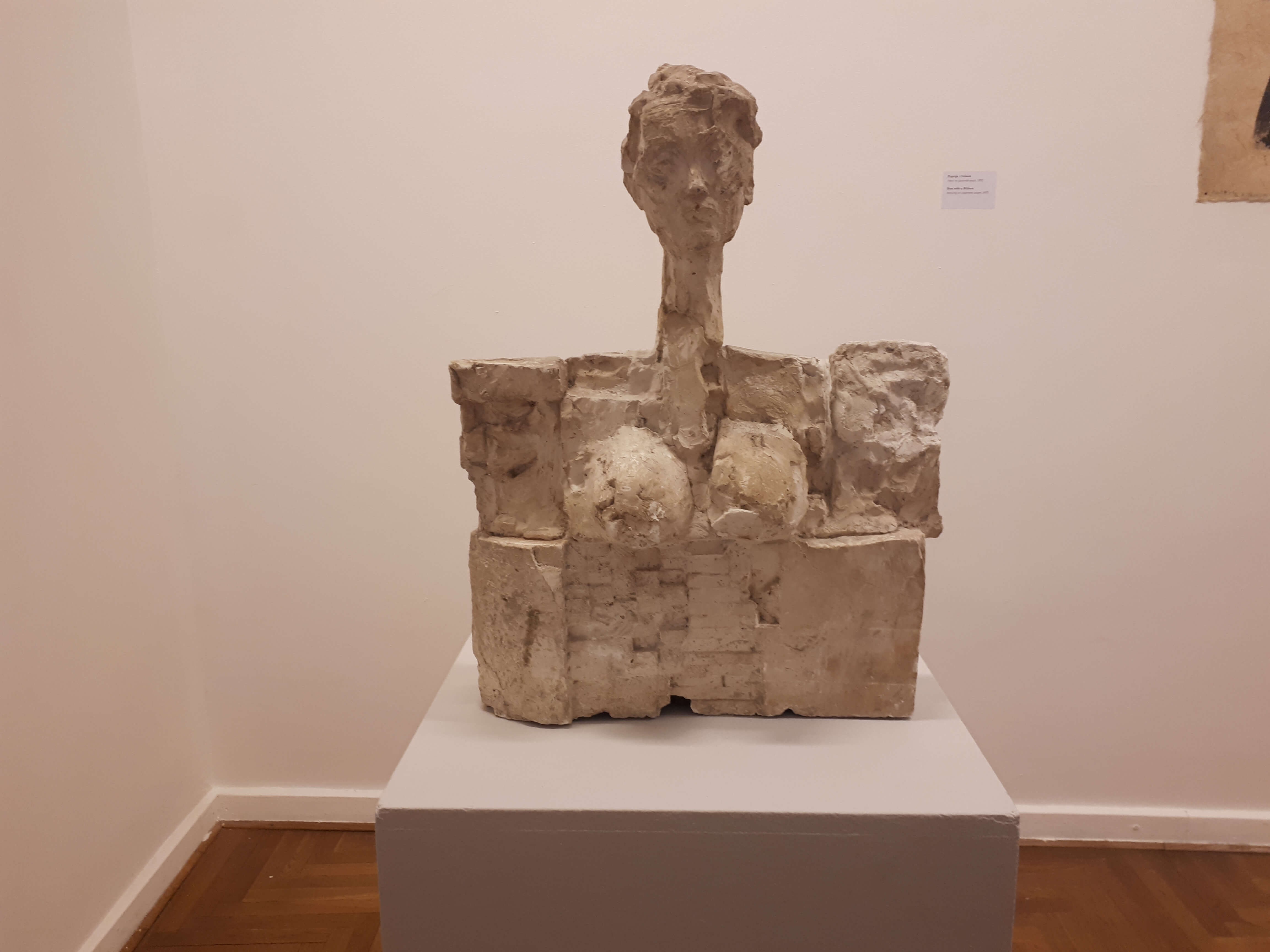
Photo: JL Flanner
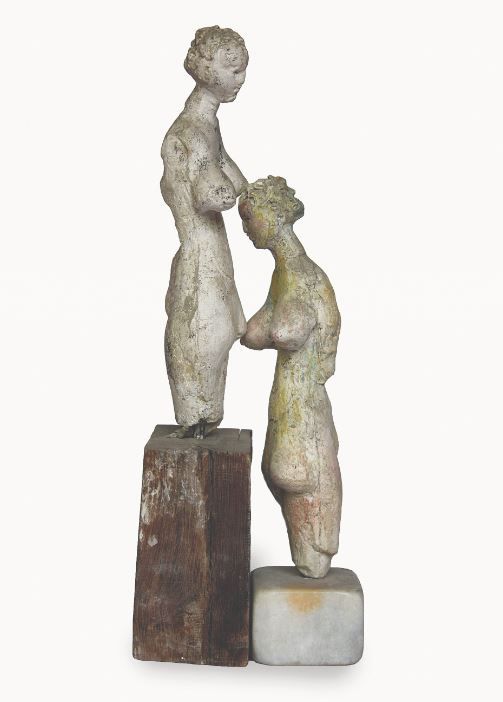
Drago Tršar, Tolažba, Photo: Dejan Habicht / Moderna galerija, Ljubljana
On at the free to visit City Gallery (Mestna galerija), and thus always worth your time, this show is recommended to anyone who’s curious about what they’re seeing and reading in this story, showing a good range of well executed works in different styles and media, albeit with a relentless focus on the breasts, bottoms and vaginas of relatively young women, with barely any male forms to be found.
Mestna galerija Ljubljana, Mestni trg 5, 1000 Ljubljana. The place is closed on Mondays, while on other days it’s open 11:00–19:00. The related website is here
STA, 23 December 2018 - The University of Maribor is planning to establish with partners a national supercomputer centre whose performance would be comparable to global centres of the kind. The university, which has acquired funds EU and national budget funds for the HPC RIVR project, hopes it will launch the centre in 2020.
"This is a huge thing for eastern Slovenia and Maribor, which brings numerous multiplicative effects," Zoran Ren, the head of the project and the vice-chancellor for research and development has told the STA.
Ren believes that the boosting of the supercomputing capacity at the university will not only contribute to the development of the field in Slovenia and research in numerous scientific fields, but also provide an impetus to the economy.
According to him, the emerging supercomputer system will help in prediction of weather phenomena, simulation of social phenomena, optimisation of individual products, simulation of elementary particle physics, development of crypto technologies, deep learning, AI and similar.
The partners in the project are the Maribor-based Institute of Information Science (IZUM) and the Faculty of Information Studies in Novo Mesto (FIŠ).
"Currently the best supercomputer in Slovenia has the capacity of around 38 teraFLOPS and is owned by a private company. As part of the HPC RIVR project, we will set up a supercomputer with the capacity of 1.5 petaFLOPS. If set up today, it would be the 23rd best-performing supercomputer in Europe and 90th in the world," said Ren.
The project has been estimated at EUR 20m, of which EUR 16.5m is planned to be spent on high-performance computer equipment. The supercomputer will be housed at the IZUM.
In the coming months, a prototype supercomputer with the capacity of 220 teraFLOPS* will first be set up at the university's computer centre, which will serve for development and testing of solutions that will be used for the main supercomputer.
The project is expected to provide jobs to an additional 30 development engineers at the university, IZUM and FIŠ.
* A teraFLOP refers to a trillion floating point operations per second, as explain in the following video
If you're looking for a massage in Ljubljana and would like the service in your home, office or hotel, the a new mobile app and website could be just the thing to help you relax as you order you treatment. Sense Mobile Massage (Sense mobilna masaža) is the latest project from Andreja Medvedic, whose varied career has taken her from a young architect associated with NSK in the late 80s (and as seen in Laibach’s video for Sympathy for the Devil), to running the Vision Factory advertising agency with Iztok Abersek during the industry’s boom years post-Slovene independence, to her latest venture, an app that puts tired, stressed or comfort-loving customers in touch with top quality massage therapists who can come to their hotel, office or home, letting people enjoy spa treatments wherever they are in Ljubljana.
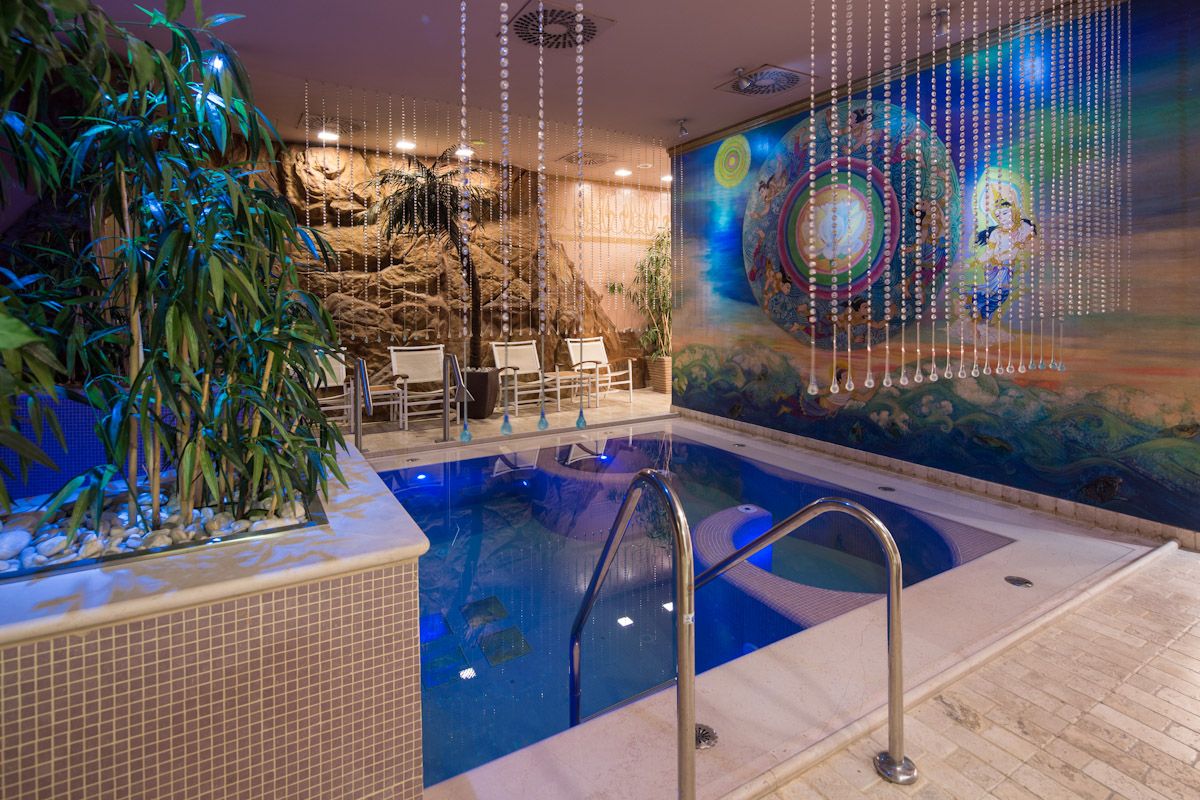

The business is a new one, but has a solid foundation, as Medvedic has been running the Sense Wellness brand for over ten years. It started in 2004 with a spa in the basement of Austria Trend, and it’s here that her background in architecture and interior design can be seen to great effect. Yes, the wellness centre is underground, but it turns out this is ideal for giving the feeling of stepping into another world, with the high ceilings, jacuzzi, giant beds and so on creating a womb-like sense of comfort that’s hard to leave, and over the last 14 years many thousands of visitors and residents have come here to enjoy a sauna, treatment and massage in Ljubljana.
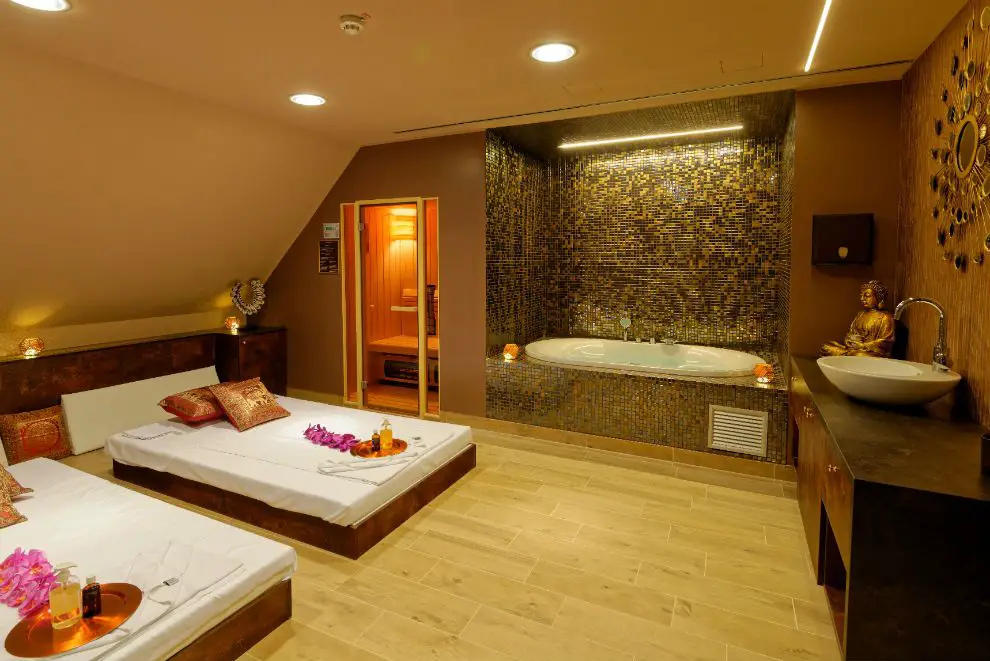
Still, a basement lacks a view, and so the next step for Sense Wellness was to look for a second location above ground. This was found in 2016 with the penthouse of Ljubljana’s fanciest old hotel, the Grand Hotel Union. Here you can enjoy a full range of spa treatments, including massages and saunas, as well as a swimming with a terrace that offers a fantastic view of the city, looking over the old town and up at the Castle.
Related: Meet the People - Blaž Sok, concierge at the Grand Hotel Union
A varied range of massages in Ljubljana from a company you can trust
With a growing number of people coming to Ljubljana for business and pleasure both wellness centres have kept busy catering to the needs of visitors and locals who want to relax and feel pampered with a gentle Asian treatment, or get their muscles worked on with a deeper sports massage.
Andreja Medvedic at work
“But unless you’re staying in Austria Trend or the Grand Union you still have travel to one the centres,” Medvedic says when we meet for a coffee. “You get all relaxed, maybe stay longer and chill out, but then you still need to get dressed and drive home. This isn’t ideal. So I had the idea of a mobile wellness centre, where we’d send a therapist to your location, and after the treatment you can really relax, maybe even fall asleep.”

And thus was born the idea for the Sense Wellness Mobile Massage App, developed in cooperation with a UK-based firm that specialises in such technology and makes it easy to use for an international audience. The soft-launch was a month ago, and the system is running smoothly and already serving customers at home, in hotels and at work. People simply use the app or website to choose a therapist, treatment, time and place, with a massage bed or chair, along with any oils or lotions needed, being brought to the set location. Customers can then relax in confidence that they’re working with an organisation that has both a long history and associations with two of the best hotels in town, with professional, certified masseuses and masseurs who know the services they offer and take pride in their work. (As a side note, and to clear up any confusion, both the app and centres offer only therapeutic massages, and any attempt to lead an appointment in a sexual direction will result in its immediate termination. The company respects and values both its customers and staff, with professionalism the key word at all times.)
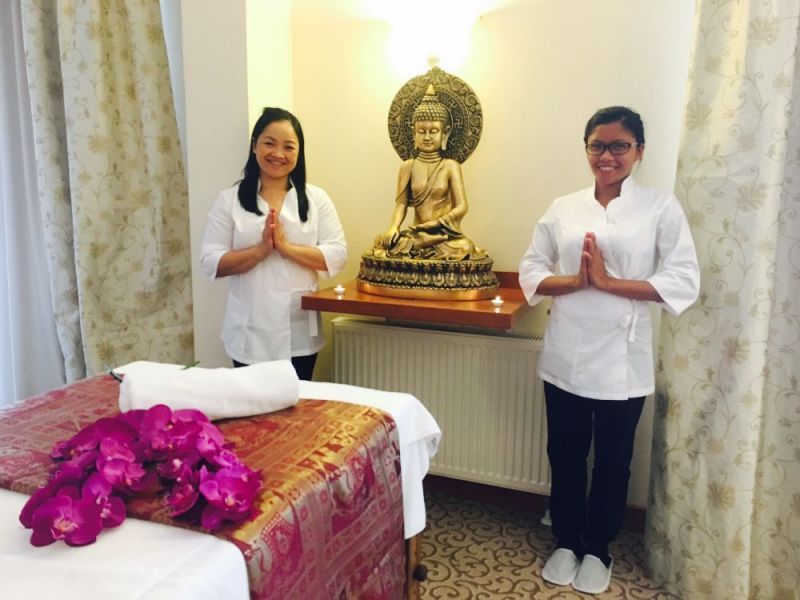
Related: Drop-in yoga classes in Ljubljana for tourists, visitors and the uncommitted
In the interests of research I recently had a Royal Thai Massage to learn more than I ever could by reading about the service, albeit at the Grand Union Hotel’s Sense Wellness Centre rather than at home or in the office. It was, as advertised, a long and relaxing experience that saw my cares and concerns melt away along with any tension in my muscles, and after the first few minutes or so of thinking about what was happening I surrendered to the skilled fingers, knuckles and elbows of my masseuse and thought nothing, felt nothing, just a gentle pleasure that left my body feeling renewed, refreshed and reinvigorated..
The one thing that could have improved things? If I didn’t have to get dressed and leave, so the next time perhaps I’ll be making a booking at home, which also happens to be my office.
If you’d like to learn more about the range of treatments on offer by Sense Wellness, then you can visit the website for more details on all their services in the Grand Union Hotel and Austria Trend, or the website for the mobile massage service, download the related app for Android or Apple. And for a limited time there’s a 20% discount with the code MEGA20SENSE – that’s “two zero”, while referring another customer to the service will also get you a discount.
Maruša Štibelj was among around 600 artists from around the world featured in this year’s Le Salon des Beaux Arts exhibition, along with 11 others from Slovenia. While to be shown alone is a considerable honour, Štibelj went one step further and received a jury award in the painting category for the following collage, Chronically Late.
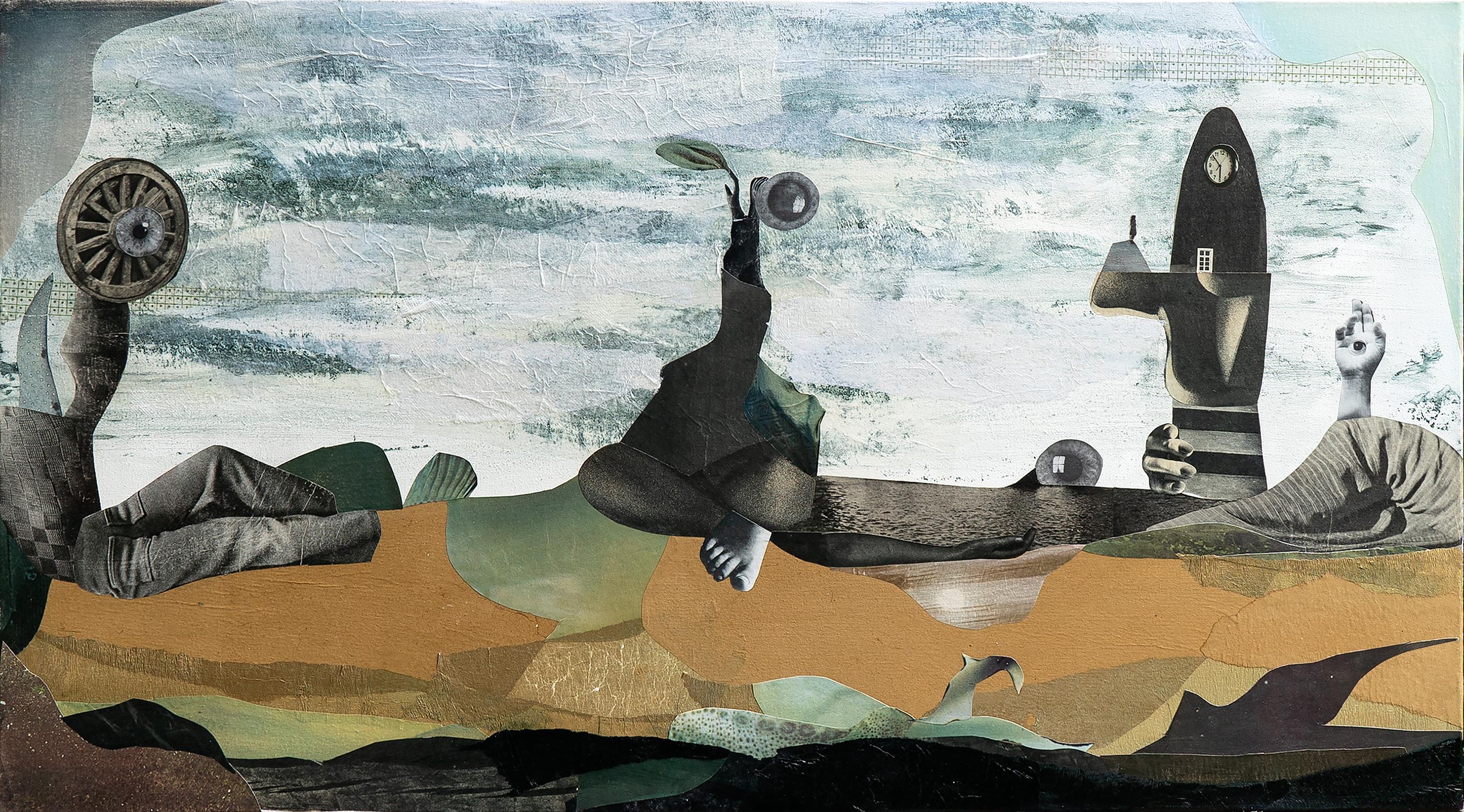
© Maruša Štibelj
You can see more of the artist’s work below, and at the end of the page there are also links to her webpage and Instagram, so you can see even more.
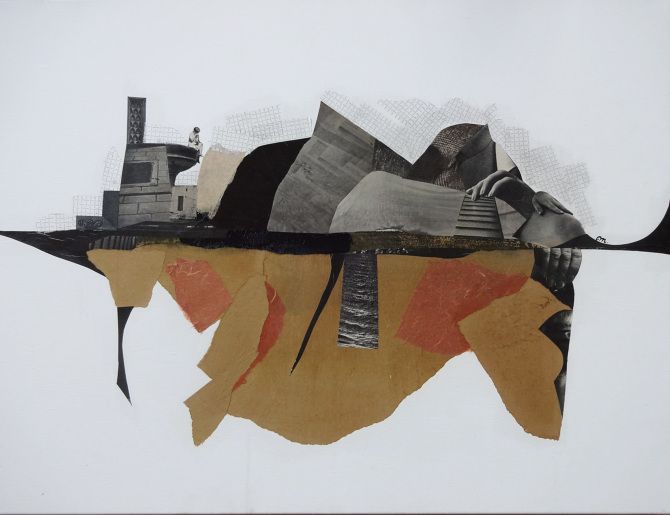
© Maruša Štibelj
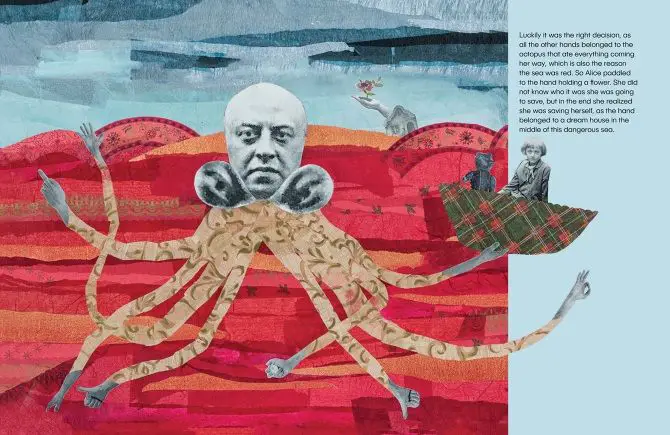
© Maruša Štibelj

© Maruša Štibelj
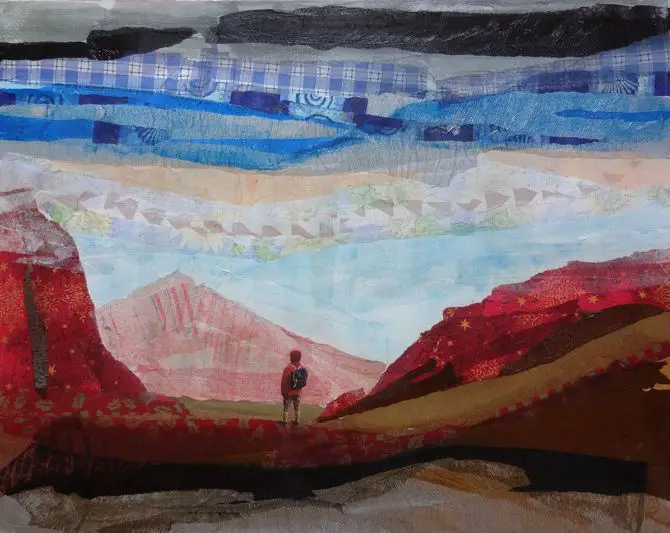
© Maruša Štibelj
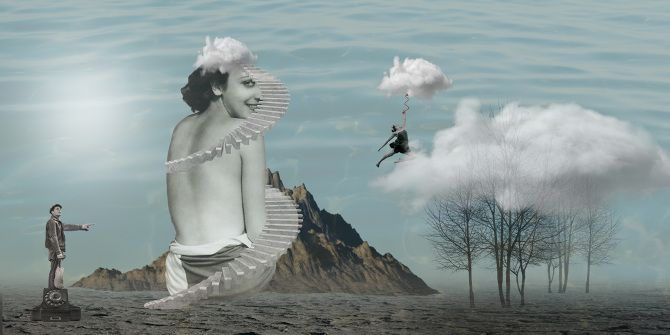
© Maruša Štibelj
Maruša Štibelj’s website is here, and her Instagram is here.
STA, 14 December 2018 - Researchers at the Chemistry Institute have found a faster way to regulate the functioning of human cells, reducing their reaction to an external signal from hours to minutes. Their research has been presented in the journal Nature Chemical Biology.
"Although we still do not understand the functioning of our cells completely, we can alter them to make them respond to select signals from the environment, which is very important, especially for the use of cells in medical treatments.
"Finding new ways of cell manipulation is an important branch of synthetic biology. In the last decade, scientists have managed to introduce new ways for manipulating cells but the cells' slow responsiveness was a significant restraint," the institute said in today's press release.
The institute's researchers have managed to achieve a cell's fast response to input signals, reducing its reaction time from hours to only a few minutes.
They achieved this with precisely monitored protein interactions and their post-translational modifications.
Thus, they avoided slow processes while preserving the ability of parallel and consecutive processing of information and forming logical circuits in cells.
The mechanism resembles natural processes such as blood coagulation and should be useful for diverse medical and non-medical applications.
The project, whose presentation is available at https://rdcu.be/bdbGi, started as a student team project for a 2016 science competition.
Only weeks before the publication of the Slovenian research, a similar project by a group of scientists from the US university of Caltech was presented in Science.
According to Jan Lonzarić, a co-author of the article, this is a confirmation that a "significant problem has been broached" and that "we've found a robust solution".
Roman Jerala, the mentor of the group of students that started the project, added that due to the difference in the mechanisms of the systems, the Slovenian system was faster and allowed for wider usage in different cell types.
This is the third article by researchers of the institute's synthetic biology department published in a Nature journal in a month, which is very rare even among the best teams of researchers in the world, the institute said.
The research was financially supported by the Slovenian Research Agency.
2018 marked a few centenaries in Slovenia, including that of the National Gallery, but in terms of individuals the focus has been on Ivan Cankar, the celebrated writer who died 100 years ago today (December 11), and whose name adorns the country’s main arts and cultural centre, Cankerjev dom.
The year has seen a wide range of activities, from a staging of Pohujšanje v dolini šentflorjanski (Scandal in St. Florian Valley) by the national theatre to the publication of some of Cankar’s works in comic book form – one of which recently won “Book of the Year” (see here) – as well as less literary affairs, such as the great man’s inclusion with two other moustachioed gents in a moustache themed tour of Ljubljana (where he’s joined by the architect Jože Plečnik and painter Rihard Jakopič).
But how well known is Cankar outside of Slovenia? A visit to Amazon.com suggests only one or two books are in print in English by a man who wrote around 30, and that he remains a rather neglected figure in this, and perhaps many other, languages.
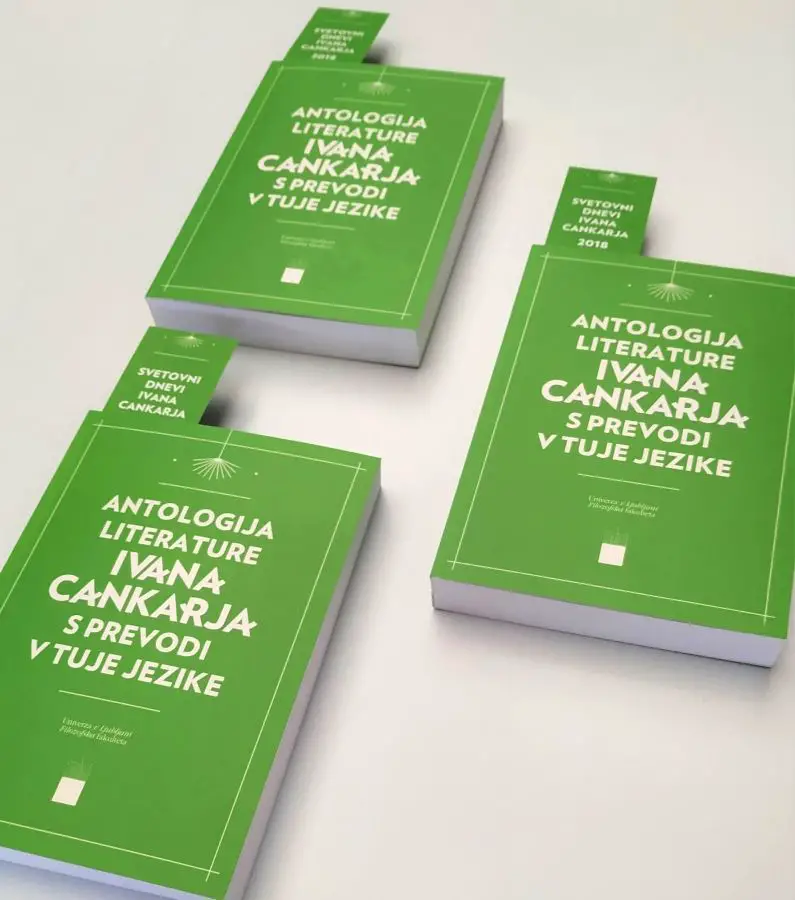
It’s thus significant that the Faculty of Arts at Ljubljana University (aka Filozofska fakulteta) recently published a volume that aims to bring one of the biggest names in Slovenian literature to a bigger audience. The texts in the anthology were translated by students, teachers and translators of Slovene from 43 universities, thus bringing up to 30 pages of Ivan Cankar to a much wider audience. The book, which can be browsed online here, is just €9 for 540 pages and divided into three parts. The first contains essays that look at different aspects of Cankar’s work – prose, poetry, drama, essays and so on – as well as his use of language. The second presents a collection of Cankar texts on various topics, while the third then translates some or all these into 21 foreign languages, including Japanese and Chinese.
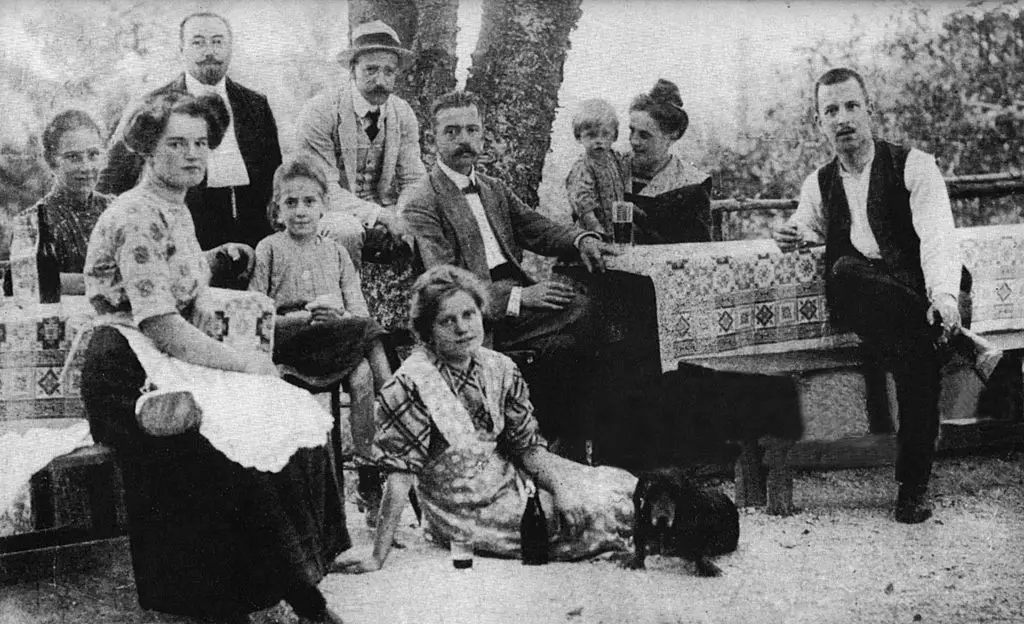
Cankar spent some years living in the inn at the top of Rožnik in Ljubljana, and you can see more pictures from his time there here. In the photo shown above he's the man in the middle, with a glass of wine but without a hat
The book can be seen as the culmination of a week of events, from December 3 to 9, termed “the World Days of Ivan Cankar” (Svetovni dnevi Ivana Cankarja), which saw activities at more than 50 universities across the globe that have departments of Slovene. These included literary evenings, film screenings, lectures, conferences and readings from the anthology itself.
An adaptation of a short story by Cankar, Gospod stotnik (1915), with English subtiles. An English translation of the story can be found here, while the Slovene original is here
Slovenologists and Cankarphiles around the world could also test their knowledge of Cankar’s life and work by playing Klanec, a game designed by the Center for Slovene. The title is a reference to Cankar's most famous novel, Na klancu, and the idea of “running behind a cart” (“tek za vozom”) in the sense of never reaching your dreams. In the game a young woman is running to catch a cart that will take her to church. While in the novel she fails, in the game players get a chance to achieve their dreams by answering questions on cankar and miming words from the titles of his works.
The game, perhaps best enjoyed with a cup of coffee
You can purchase the book from the university bookstore (the Filozofska is on Aškerčeva cesta) or online, and it’s available at many other bookstores around Slovenia, with Mladinska knjiga being a good place to start looking. The game is also available at various outlets, and can be found online here. If you're intererested in learning Slovene, then perhaps take a look at our interview with two Slovenian teachers on the challenges foreigners face when studying the language, which also includes links to many other resources.
STA, 8 December 2018 - Slovenian pop icon Helena Blagne will mark 30 years of her singing career with a spectacle at Ljubljana's Tivoli Hall. The first Slovenian recording artist to fill the country's biggest indoor venue, the Stožice Arena, in 2011, will present her new album tonight.
Blagne returned to the music scene last year after a one-year break with a song about unconditional love Ti Boš Vedno Prvi (You'll Always Be My No. 1), a collaboration with songwriter Raay.
A Slovenian radio hit, the song has more than 1.8 million views on You Tube and gives the title to tonight's concert, at which Blagne will be joined by several Slovenian musicians, from the jazz, funk, Latin and blues fusion ensemble Marko Hatlak Band, to Kvatropirci, ska band Elvis Jackson and Raay.
The 55-year-old Blagne, the most successful Slovenian singer of all time, made her debut performance when she was 12 at a singing competition in Jesenice.
Her career kicked off after she won the hearts of the audience and jury at the Macedonian Makfest music festival in 1986.
Three years later, her duet with opera singer Nace Junkar won the Melodies of Sea and Sun festival held at the Slovenian coast.
Having studied opera singing for several years, Blagne has collaborated with the world's best opera singers, including Placido Domingo and the group Il Divo.
She has recorded 20 albums and sold more than two million records, a milestone that remains out of reach for any other Slovenian musician, according to her label, Dallas Records.
All her concerts have been sold out and she was the first Slovenian artist to fill the Stožice Arena together with Vienna Boys' Choir and three Slovenian tenors in 2011.
She has performed more than 4,000 concerts and won a number of music festival awards throughout the former Yugoslavia.
In the autumn 2006, she also ventured into theatre, having played the role of Agave in The Bacchae, by one of the most acclaimed Slovenian directors Vito Taufer. Currently she is a co-star of a comical musical Menopause alongside three other show business celebrities at Špasteater.
Being a favourite of Slovenian gossip magazines, she made headlines with her divorce in 2013 and her alleged ties to tycoon Ivan Zidar.
Blagne said in an interview ahead of the concert that she was particularly fond of the stage at Tivoli, where her concerts started. "I could have picked Cankarjev Dom for example or the Stožice Arena, which I already sold out years ago. But this stage has a special energy, which I find very important," she told Story magazine.
A Slovenian human rights NGO, Danes je nov dan (Today is a New Day), has produced a game that aims to raise empathy with regard to the difficulties migrants face in leaving their countries and trying to find a safe space in another country.
It’s called Razor Wire, and was inspired by November 2018 being the third anniversary of the placing of such wire along the border with Croatia in order to deter migrants. Moreover, although the number of people trying to cross the border has since declined dramatically, and the new Prime Minister, Marjan Sareč, made removing the wire a campaign issue, the barrier still remains in place.
Level one - escape the war
The game – which can be played online here, if you have a keyboard – is in Slovenian but relatively simple to follow, and requires you to guide a migrant through three increasingly difficult levels as they attempt to reach Europe.
Speaking to Reuters, Maja Cimerman, a project manager at the NGO, noted that "Many refugees... call their experience "the game" because it has many traps and obstacles. They have to travel at night, they have to avoid the police, they are often robbed or their documents are taken away by the police, and often or regularly they are sent back to refugee camps.”
We kept getting stuck on level 2, but perhaps you can do better.
STA, 29 November 2018 - Slovenia's bobbin lace-making, a traditional lace-making technique using special wooden sticks - bobbins, has made it to the UNESCO list of intangible cultural heritage.
The decision was taken on Thursday by the UNESCO Intergovernmental Committee for the Safeguarding of the Intangible Cultural Heritage, as it is meeting in Port Luis, Mauritius, the Slovenian Culture Ministry said in a release.
Slovenia formally nominated this special technique of making delicate lace in March 2017. The tradition is especially strong in the north-west, around Idrija, Cerkno and Škofja Loka.
In recent years, it has been revived and turned into a popular activity, with 120 associations and groups dedicated to lace-making around Slovenia.
In Idrija, there is for instance a bobbin lace-making school and the town also organises an annual festival dedicated to this craft.
In 2016, bobbin lace-making was declared cultural heritage of national importance, which is also a condition for nominations with UNESCO.
The nomination file was prepared by a number of institutions such as the Slovenian Ethnographic Museum and other museums from Idrija, Ljubljana and Škofja Loka, as well as associations and groups involved in bobbin lace-making.
The ministry considers the listing a special recognition of this art which has been handed down from generation to generation, binding children, adults and the elderly.
Bobbin lace-making used to be an important economic activity, for which reason it has survived, the ministry said.
Nowadays its role has changed to become a favourite pastime for retired women, children and youth, with men usually helping with making bobbin lace-making tools.
It is moreover an inspiration for fashion designers, industrial designers, contemporary visual artists and architects, and is used for plate decorating.
Bobbin lace is the fourth item of Slovenia’s cultural heritage on the list
The elements of the UNESCO list of intangible cultural heritage of humanity, the list of intangible cultural heritage in need of urgent safeguarding and the registry of best practices are deemed as significant bastions of humanity's intangible heritage, the highest honour for intangible heritage in the world.
The lists were established in 2008 when the 2003 Convention for the Safeguarding of the Intangible Cultural Heritage took effect. Slovenia ratified it in 2008 and set up the national registry of intangible cultural heritage the same year, which currently contains 66 units.
Slovenia's other entries on the UNESCO list of intangible cultural heritage are the door-to-door rounds of Kurents, a traditional Slovenian carnival costume, (since December 2017), the Škofja Loka Passion, the mass staging of an early 18th-century play (since December 2016), and since yesterday, dry stone walling, the ancient building method used in Slovenia, Cyprus, Greece, Bulgaria, Croatia, Italy, Switzerland, France and Spain.
Other stories about Slovenia’s cultural heritage are here
STA, 27 November 2018 - The Zois Prizes for outstanding achievements in science were handed out in Ljubljana on Tuesday, with theoretical physicist Boštjan Žekš and historian Milica Kacin Wohinz receiving the life-time achievement accolades. For the first time ever, the Puh Prize was also given out today. It went to Franc Vodopivec, a metallurgy expert.
Žekš worked at the Jožef Stefan Institute, taught biophysics at the Ljubljana Medical Faculty and served as the dean of the Nova Gorica University, the prize panel of the Ministry of Education, Science and Sport noted ahead of the award ceremony at the Cankarjev Dom culture centre.
He was admitted into the Slovenian Academy of Sciences and Arts (SAZU) in 1987. He served as the academy's head between 2002 and 2008.
The 78-year-old made great contribution to the progress of the fields in which he worked, lectured in research centres around the globe and held opening lectures at major international science conferences.
Kacin Wohinz, 88, worked at the Contemporary History Institute in Ljubljana, also serving as its head between 1979 and 1983. Her research focused on the history of Primorska, above all the assimilation of the Slovenian minority in Italy.
She published in a number of scientific journals and wrote several books about assimilation to which Slovenians in Primorska and Croats in Istria were subjected during Italian occupation between 1918 and 1920, as well as their efforts to resist Fascism between 1920 and 1941.
The Zois Prizes are named after Baron Žiga Zois (1747-1819) and have been presented annually since 1998 on the day this patron of arts and science was born.
Named after inventor-come-industrialist Janez Puh (1862-1914), the founder of the Austria-based Puch manufacturing company, the Puh Prize is given out for inventions, development achievements and the use of scientific findings in innovation.
In previous years, the government's panel in charge of science awards only gave out Puh Recognitions. Tonight, the first Puh Prize for lifetime achievement went to metallurgy expert Vodopivec.
He left an indelible mark in the industry and in the academia and helped introduce a number of changes that contributed significantly to the development of the industry.
Vodopivec moreover had great influence on investments in the steel industry and aluminium production, the panel added.


